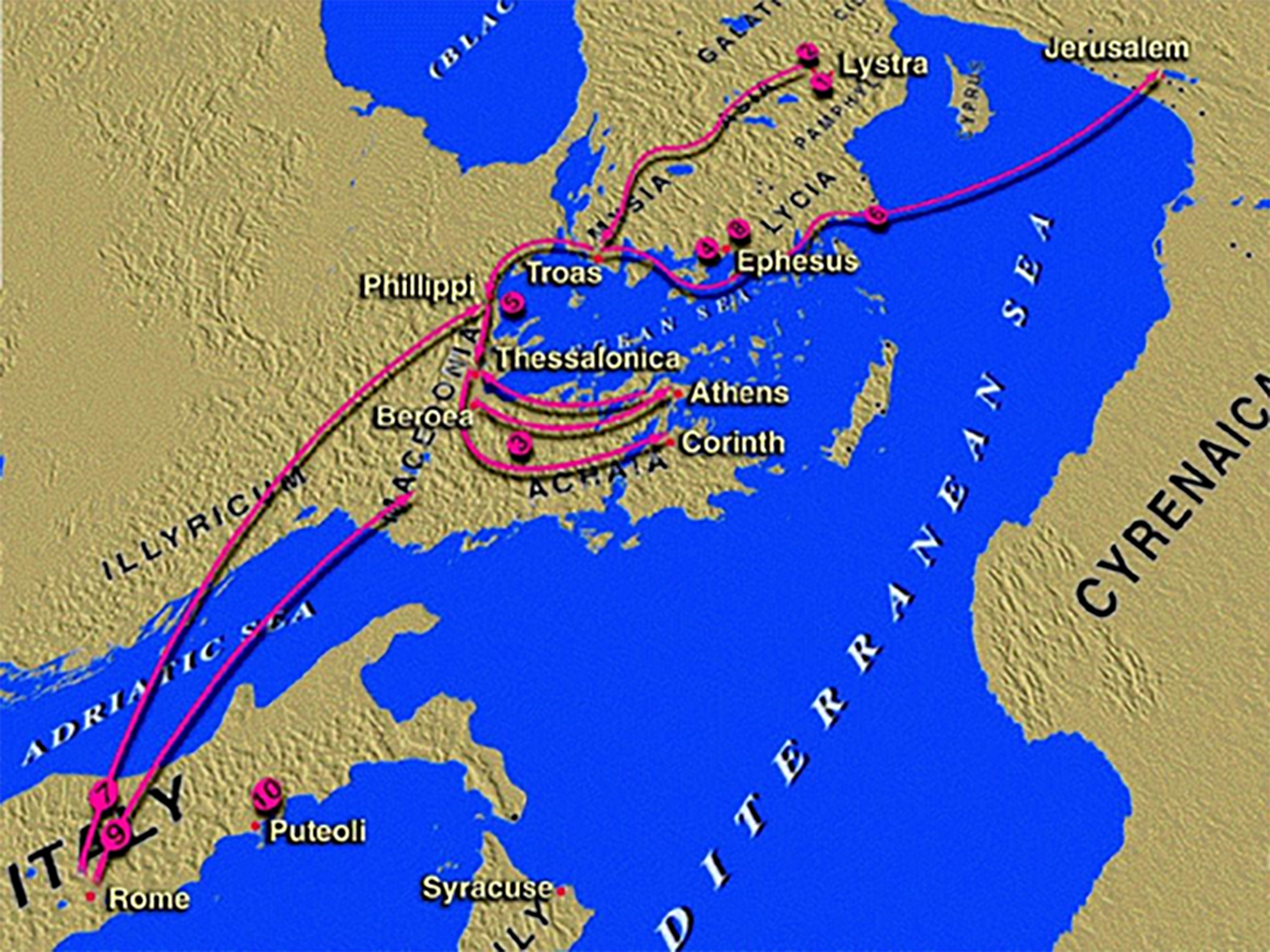1 Timothy
Paul’s Letters to Timothy
 1. Title.
1. Title. In the earliest Greek manuscripts the title of this book is simply
Pros Timotheon A (
“To Timothy I”). Later elaboration has expanded the title to the form found in the KJV.
2. Authorship. This epistle identifies Paul as its author (
ch. 1:1). For a discussion of authorship see Vol. V, pp. 183-185. Concerning the date of writing see Vol. VI, p. 107.
3. Historical Setting. The circumstances of the writing of 1 Timothy can be ascertained only by inference from incidental remarks in the epistle. For a discussion of these as they bear on the date and circumstances of the writing of this epistle see Vol. V, p. 184.
4. Theme. This epistle was written to Timothy while he was pastor of the Ephesian church, and is composed primarily of instructions addressed to him as a leader of the church. Accordingly it is classified as a pastoral epistle. In it Paul admonishes Timothy to conduct himself in a manner pleasing to God and helpful to the flock over which God has placed him, and delivers to him a solemn charge to preach the Word and to defend its teachings. This epistle reflects a rather fully developed plan for church organization and administration. The emphasis upon doctrine in 1 Timothy and the other pastoral epistles (see
1 Tim. 4:6, 13, 16; 2 Tim. 3:14-17; 4:1-4; Titus 1:9; 2:1, 7) is illustrated by the fact that of the 21 times the Greek word for doctrine (
didaskalia) is found in the NT, 15 appear in 1 and 2 Timothy and Titus.
Though Paul seems to have felt himself closer to Timothy than to his other associates (see
Phil. 2:19, 20), the inference may be drawn from this epistle that Timothy was a man of mild temperament and not so aggressive as Paul might have wished. Accordingly the apostle encourages his younger companion in the ministry to more vigorous leadership. The close relationship between Paul and Timothy accounts for the free, frank manner in which the apostle expresses his desires, admonitions, and purposes to the pastor of Ephesus, and doubtless explains the consequent lack of systematic order. The epistle was apparently written, point by point, as successive aspects of ministerial activity came to the apostle’s mind.
5. Outline. I. Salutation, 1:1, 2.
II. The Charge to Rebuke Teachers of Perverted Doctrine, 1:3-20. A. Perverted use of law produces strife, 1:3, 4.
B. Proper use of law develops character, 1:5-11.
C. Paul’s life confirms power of proper use of law, 1:12-17.
D. Timothy challenged to competent leadership, 1:18-20.
III. The Universality of Christian Worship, 2:1-15. A. Prayers for all men, 2:1-3.
B. Salvation for all men, 2:4-7.
C. Worship procedure for all men, 2:8-15.
IV.Prerequisites for Christian Leaders, 3:1-13. A. The character of bishops, 3:1-17.
B. The character of deacons, 3:8-13.
V. The Christian Message, 3:14 to 4:5. A. The essential message of Christianity, 3:14-16.
B. The counterfeit message within Christianity, 4:1-5.
VI. Practical Suggestions for a More Earnest Ministry, 4:6-16. A. Study on sound doctrine, 4:6.
B. Avoid speculations, 4:7.
C. Be an example in godliness, 4:8-16.
VII. The Minister as Church Administrator, 5:1 to 6:19. A. His relation to old and young members, 5:1, 2.
B. His relation to the widows, 5:3-16.
C. His relation to the elected elders, 5:17-25.
D. His instruction concerning Christian slaves, 6:1, 2.
E. His relation to teachers of false doctrine, 6:3-5.
F. His relation to worldly riches, 6:6-10.
G. His responsibility as a character pattern for all, 6:11-16.
H. His relation to the Christian rich, 6:17-19.
VIII. Paul’s Final Charge to Timothy, 6:20, 21.